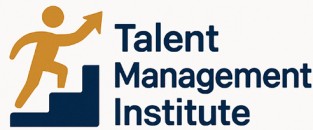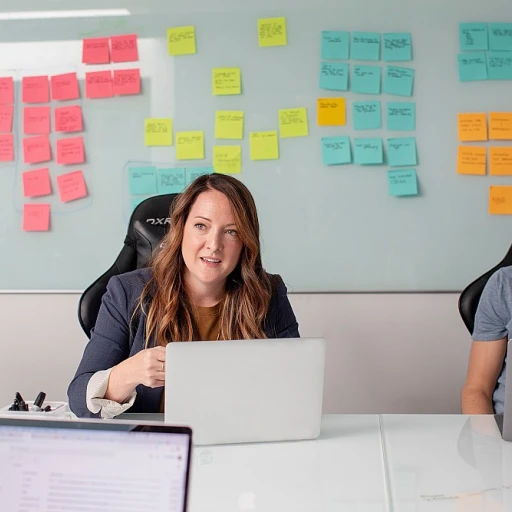
Understanding Team Dynamics
Grasping the Dynamics of Your New Team
Understanding team dynamics is crucial when you integrate into a new team. Each team has its own unique rhythm and flow, influenced by the personalities and working styles of its members. By observing how people share ideas and solve problems, you can gain insights into the team’s collaboration style. This understanding will help you navigate the complexities of team interactions, whether in a traditional office setting or through virtual means like video conferencing.
When teams merge, such as during mergers and acquisitions, the dynamics can shift dramatically. Employees from different backgrounds and organizational cultures come together, requiring a period of adjustment. In these situations, learning about the team’s history and previous projects can provide context for current dynamics. This knowledge will allow you to contribute more effectively and build trust with your new colleagues.
Time spent observing and participating in team-building activities can also be beneficial. These activities are designed to improve team cohesion and communication, fostering a shared vision among team members. By engaging in these activities, you not only learn about the team’s dynamics but also demonstrate your willingness to be an active participant in the team’s success.
For more insights on how to ensure your team is always ready to log in and function effectively, consider exploring this resource.
Building Rapport with Team Members
Establishing Connections with Peers
Navigating the complex web of team dynamics in a new work environment can be challenging. To build rapport with your team members efficiently, focusing on establishing meaningful connections can significantly accelerate your seamless integration into the team. Here are some considerations to help you navigate this process effectively:- Understand Your Team Members: Invest time in getting to know your team members, their roles, and their expertise. This understanding will allow you to identify collaboration opportunities, particularly in cross-functional or merger environments, where diverse skills and perspectives are invaluable.
- Actively Listen: Effective communication starts with listening. Paying attention to verbal cues and body language during conversations can offer insights into team dynamics and individual preferences, leading to more fruitful exchanges and fostering trust.
- Engage in Team Activities: Participating in team-building activities can be a powerful means of strengthening relationships. Whether through informal gatherings, virtual meetups, or project-based collaboration, these activities promote better team cohesion and ease the process of merging teams.
- Cross-Collaboration: Encourage cross-team collaboration by involving yourself in projects that require input from various departments. This will help expand your network within the organization and improve team outcomes as you gain diverse perspectives.
- Learner Mindset: Maintain a posture of learning to enhance rapport. Showing genuine interest in team members' expertise and a willingness to contribute will facilitate successful integration into the team culture and project objectives.
Adapting to the Team Culture
Immersing Yourself in the Team Environment
Successfully integrating into a new team environment requires understanding the nuances of its culture and shared vision. Whether the organization is engaging in a team merger or working within a stable structure, newcomers should take the time to observe and learn. Doing so will allow for better navigation of workplace dynamics and improved team collaboration.- Learn by Observation: Spend the initial days observing how existing team members communicate and collaborate during both virtual and in-person meetings. Notice the flow of communication during project discussions, how people share ideas, and engage in problem-solving activities.
- Embrace the Team's Values: Every team has its own culture, often reflecting the broader organization's values. Aligning with these values can help you contribute effectively and build trust among colleagues. Participation in team building activities or informal gatherings can provide insight into the unwritten rules that guide team interactions.
- Adaptation as a Key Strategy: Adaptation is crucial, especially in the context of mergers and acquisitions where teams from different backgrounds must work together towards common goals. Understanding and respecting these cultural differences is key to ensuring a seamless merge of teams.
Effective Communication Techniques
Mastering Communication in Diverse Teams
Effective communication is the backbone of any successful team, especially in today’s diverse work environments where cross-functional teams and virtual collaborations are common. Whether you’re part of a project team or involved in a merger, understanding how to communicate effectively with team members will help you integrate seamlessly and contribute to a shared vision.
Here are some best practices to enhance your communication skills within a team:
- Active Listening: Pay close attention to what your team members are saying. This will allow you to understand their perspectives and build trust. Active listening is crucial in team building activities and during mergers and acquisitions when team dynamics are shifting.
- Clear and Concise Messaging: Whether you’re communicating in person or through video conferencing, ensure your messages are clear and to the point. This helps in avoiding misunderstandings and ensures that everyone is on the same page.
- Open Feedback Channels: Encourage open communication by creating an environment where team members feel comfortable sharing their thoughts and feedback. This can significantly improve team collaboration and problem-solving capabilities.
- Adaptability: Be prepared to adapt your communication style to suit different team members. Some may prefer detailed emails, while others might respond better to quick chats or video calls. Flexibility in communication can enhance your professional development and help team members feel valued.
- Regular Updates: Keep your team informed about your progress and any challenges you face. Regular updates foster transparency and help in building rapport with team members, especially in a team merger scenario.
By focusing on these communication techniques, you can effectively contribute to your team’s success and ensure a smooth integration into any team environment. Remember, communication is not just about speaking; it’s about listening, understanding, and responding appropriately to foster a collaborative and productive work atmosphere.
Contributing Value Early On
Demonstrating Your Value from the Onset
Stepping into a new role within a team or during a team merger is a time when first impressions matter. Demonstrating your value early on can significantly influence how you are perceived by team members and integrate seamlessly into the team dynamics. Begin by engaging in problem-solving activities that show your readiness to contribute to the team's success. A proactive approach to tackling challenges will help team leaders and members recognize your commitment to shared objectives. Be open to participating in cross-project collaboration to understand different facets of the organization's work, allowing you to better align your efforts with team goals. In a rapidly changing environment like mergers and acquisitions, adapting to various team building activities will enhance collaboration and trust among team members. These activities not only foster personal connections but also strengthen your rapport with colleagues. Engaging in professional development opportunities within the organization can also sharpen your skills, ensuring you're on top of your game when needed most. Video conferencing and other virtual tools are key in modern workplaces, especially during merger acquisition activities when teams need to connect across geographical boundaries. By skillfully utilizing these platforms, you can ensure effective communication with employees, even as team members join from diverse locations. Equally important is understanding the value of time. Streamlining your workflow and respecting others' schedules will allow team members to see you as a dependable member of the team. Establishing a reputation for reliability will help ingratiate you with both seasoned employees and those new to the organization. Remember, showcasing your commitment to the team's shared vision, whether during a large-scale team merger or in day-to-day operations, is key to carving out your place within the group. By integrating these best practices, you'll improve team cohesion and demonstrate your importance as a valuable and dynamic team member.Seeking Feedback and Continuous Improvement
Continuous Evaluation and Growth
Seeking feedback and focusing on continuous improvement are essential aspects of successfully integrating into a new team. By soliciting input from your team members and leaders, you create opportunities to fine-tune your approach and adapt to the evolving needs of the team. This practice encourages open communication and enhances trust within the team.- Solicit Constructive Feedback: Regularly request feedback from peers and supervisors about your performance and contributions. This will help you understand how your efforts are perceived and identify areas for improvement.
- Embrace Professional Development: Engage in professional development opportunities and team building activities, as they can provide valuable insights and enhance your skills. Virtual workshops, online courses, and cross-team collaborations are excellent avenues for growth.
- Adapt to Changes: Teams often undergo mergers, acquisitions, or other changes that impact dynamics and workflows. Stay flexible and open to adapting your strategies to align with the new structure and goals. Engaging positively with change can foster a shared vision and common purpose among team members.
- Foster a Culture of Continuous Learning: Encourage others to embrace learning by sharing insights and promoting knowledge exchange within the team. This can improve team collaboration and enhance the team's problem-solving abilities.












